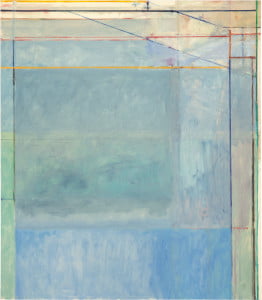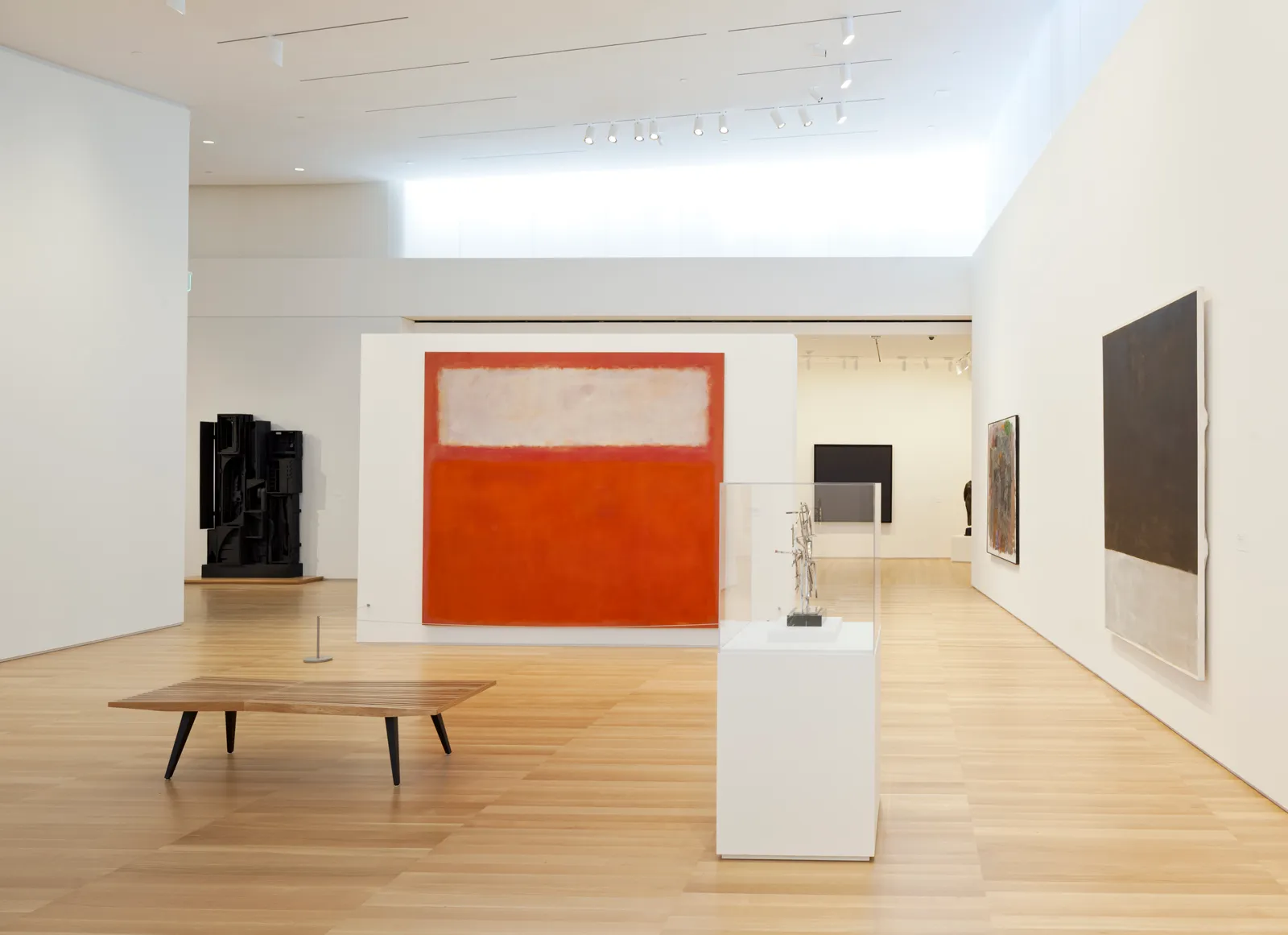A testament to the burgeoning arts scene at Stanford, the Anderson Collection is home to 121 paintings and sculptures created by some of the most prominent American modern and contemporary artists — several of them hailing from the Bay Area. Below are five of the most striking pieces on display at the Anderson Collection.
1. “The Beaubourg” by San Francis
One of the only pieces housed on the first floor of the Anderson Collection, it is difficult to ignore the looming presence of San Francis’s “The Beaubourg.” The painting is a splendid, colorful homage to the abstract expressionist movement, which was a painting style of the post-World War II era that deviated from realism and gravitated towards the representation of objects as simple shapes and lines. Like many of his contemporaries, San Francis practiced loose, gestural mark-making, which can be seen in the multicolored drips and splatters that are strewn across “The Beaubourg.” It is interesting to note the contrast between these seemingly formless paint splatters and the geometric forms that crisscross the piece.
2. “Ocean Park #60” by Richard Diebenkorn

“Ocean Park #60” is a product of Bay Area painter Richard Diebenkorn’s progression from representational works to depictions of purely abstract forms — in other words, from accurate depictions of real objects to compositions based entirely on geometric shapes and patterns. In this piece, Diebenkorn plays with composition, lines and color. The artist is known for decomposing scenes from life into conglomerates of lines and shapes, as he does in “Ocean Park #60.” Diebenkorn uses a subdued, cool color palette, alluding to the ocean, though he adds depth to his composition by superimposing red and yellow lines across the upper half of the painting.
3. “Yosemite Falls” by Mark Tansey
Fantastical and dreamlike despite being monochromatic, “Yosemite Falls” captivates through its dynamic composition, with the diagonal shape of the waterfall cutting across the center of the piece. The work is Tansey’s representation of Yosemite Falls, featuring a cascade of cameras and tripods in lieu of falling water. Tansey paints a dark, brooding shadow at the peak of his imaginary falls that gradually peters off, illuminating the scraggle of rocks and branches in the foreground. Homegrown artist Mark Tansey’s near-photographic precision in his painting contrasts with the general trend of abstract works being featured in the Anderson Collection. The artist’s decision to paint “Yosemite Falls” entirely in icy blue creates an ominous, otherworldly vibe by detaching the viewer from reality and into Tansey’s world of perception.
4. “Pink and White over Red” by Mark Rothko

An American painter and, like Pollock, a contributor to the abstract expressionist movement, Mark Rothko is one of the most celebrated artists of the postwar era. Painted in his signature style — featuring the motif of rectangular forms floating in a field of color — Rothko’s “Pink and White over Red” consists of a white, rectangular spot of paint overlaid on an expansive red background. The piece’s unconventional composition attests to Rothko’s mentality of free self-expression, whereas his bold color choice holds traces of the 1920s Surrealist movement that sought to reconcile dreams and reality.
5. “Lucifer” by Jackson Pollock
As evidenced in “Lucifer,” Jackson Pollock is known for rejecting traditional oil painting methods, instead favoring his own brand of painting that involved dripping and splattering paint to create a dynamic composition. “Lucifer” features large black drips of paint interspersed with hints of complementary colors that were purportedly squeezed directly from paint tubes. The painting, like many of Pollock’s other works, can be characterized as organized chaos. Moreover, “Lucifer,” the title of the piece, suggests total immersion in the lines of the painting and in the depths of Pollock’s psyche.
The Anderson Collection is open Wednesday and Friday through Monday, 11 a.m. to 5 p.m. and Thursday, 11 a.m. to 8 p.m.
Contact Eric Huang at eyhuang ‘at’ stanford.edu.
